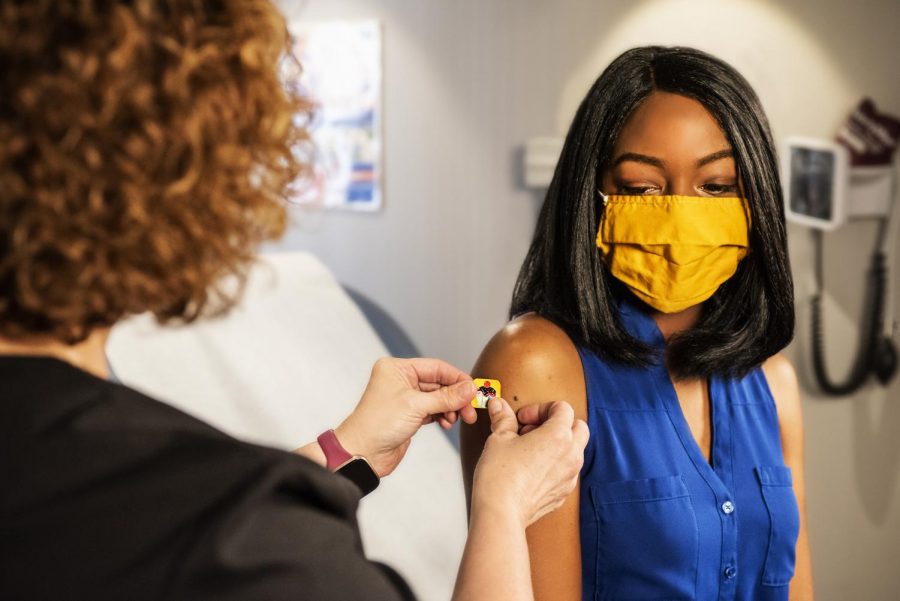From Lotions to Ground-Breaking Vaccines: Johnson & Johnson’s Contributions
As of February 27th, the third FDA-approved vaccine has been given the authorization to begin distributions around the world. Unlike the previous mRNA vaccines that require two doses, a new approach has been taken by Johnson & Johnson to produce an effective, singular dose, Covid-19 Vaccine. Only people 18 and older can receive the vaccine as of now.
The vaccine works differently than other vaccines made by Pfizer and Moderna, which use mRNA to fight the virus. Johnson & Johnson uses an adenovirus instead, a virus that causes common colds and other illnesses. However, they have assured that this virus is modified so it can enter cells, but can not make you sick nor replicate the virus in your cells.
The scientists have added the gene for the coronavirus spike protein to the adenovirus so that when injected with the vaccine, the adenovirus will deliver the instructions to your cells to train your immune system to fight against the coronavirus. While doing so, you will create the antibodies to attack the spike protein, so your body will have the capability to combat the virus if you are later exposed to Covid-19.
This adenovirus vaccine is able to be stored in refrigerators for a longer period of time than the other vaccines due to the durability of the DNA. According to experts at Johns Hopkins Bloomberg School of Public Health, “Unlike mRNA vaccines, which must be stored at -20 degrees C, adenovirus vaccines can be refrigerated for up to three months at 36–46 degrees F.”
Because of this, the Johnson & Johnson vaccine can be distributed easier in doctor’s offices, pharmacies, and clinics, without the need for specialized refrigerators. Having the technology to generate an easily accessible vaccine will help contribute to herd vaccination.
Likewise to the mRNA vaccines, however, side effects after injection are likely. Possible expectations could be muscle aches and pain, fever, nausea, chills, headache, or drowsiness. They should diminish in a day or two. It is important to keep this in mind when signing up for vaccination and to ensure that you don’t have any strenuous activities the next day.
The vaccine has shown 66% effectiveness globally at preventing moderate to severe Covid-19 infections, and 72% in the clinical trials in the United States. It showed less effectiveness in Latin America and South Africa with 66% and 57% efficacy, respectively. University of Missouri Health Care concludes that it is likely these countries have lower percentages because “more easily transmissible” coronavirus variants were circulating in those countries at that time. There were fewer variants in the United States, which explains the higher percentage.
A common concern is that the percentage of the Johnson & Johnson vaccine is significantly lower than the projected efficacy for the Moderna (94%) and Pfizer (95%) vaccines. It should be noted that the mRNA vaccines were not tested against high-level variants like the Johnson & Johnson vaccine was. There is less known about how those vaccines will act against other strains. On the contrary, this adenovirus vaccine was tested against the new variants that were prevalent in Latin America and South Africa.
Additionally, the Johnson & Johnson vaccine was shown to be less productive for mild to moderate infections than severe cases. This could explain why the overall efficacy from moderate to severe disease is 66%, much lower than the percentage for only severe infections.
University of San Francisco’s science writer, Nina bai, states, “For severe disease, which includes people who were sick enough with COVID-19 to require medical intervention but recovered without hospitalization, the efficacy was about 85 percent across the board in Brazil, South Africa and the U.S.” The vaccine works better against stronger infections, yet that does not mean if a mild or moderate disease is acquired, that there will be no protection against the virus.
The CDC’s recommended waiting period is two weeks after infection where close to full vaccination is obtained. It is probable that the efficacy of the J&J vaccine is escalated after this period.
Therefore, no matter if the infection is mild or severe, a substantial amount of defense will be constructed by your immune system. If exposed to the coronavirus after vaccination, fewer viruses would likely be harbored, making transmitting a severe disease improbable.
Just recently on April 13th, The FDA ordered a “pause” on the distribution of the Johnson and Johnson vaccine because of 6 cases of blood clots. This vaccine has reached almost 7 million recipients in the United States, so these blood clots are very rare reactions.
The cases that have been reported so far are in women ages 18 to 48. Nonetheless, the pause was essential to limit the possibility of other age and gender groups feeling the reaction too. Dr. Anthony Fauci urges to be on the lookout for any symptoms that appear, especially a sudden and painful headache, one to two weeks after the vaccination.
The hard truth is that no vaccine has proved to be 100% effective in preventing Covid-19. Despite being vaccinated or not, keeping your distance, practicing sanitation, and wearing a mask is essential for achieving herd immunity and reverting back to normal.

Hailey is a senior who is thrilled for her fourth year at The Banner, and third as the Harriton News Editor. Outside of the Banner, she is captain and...



